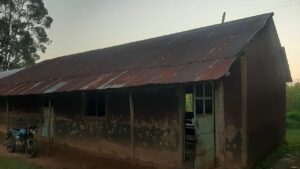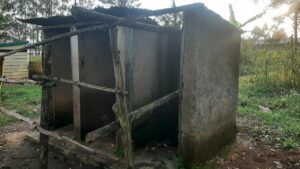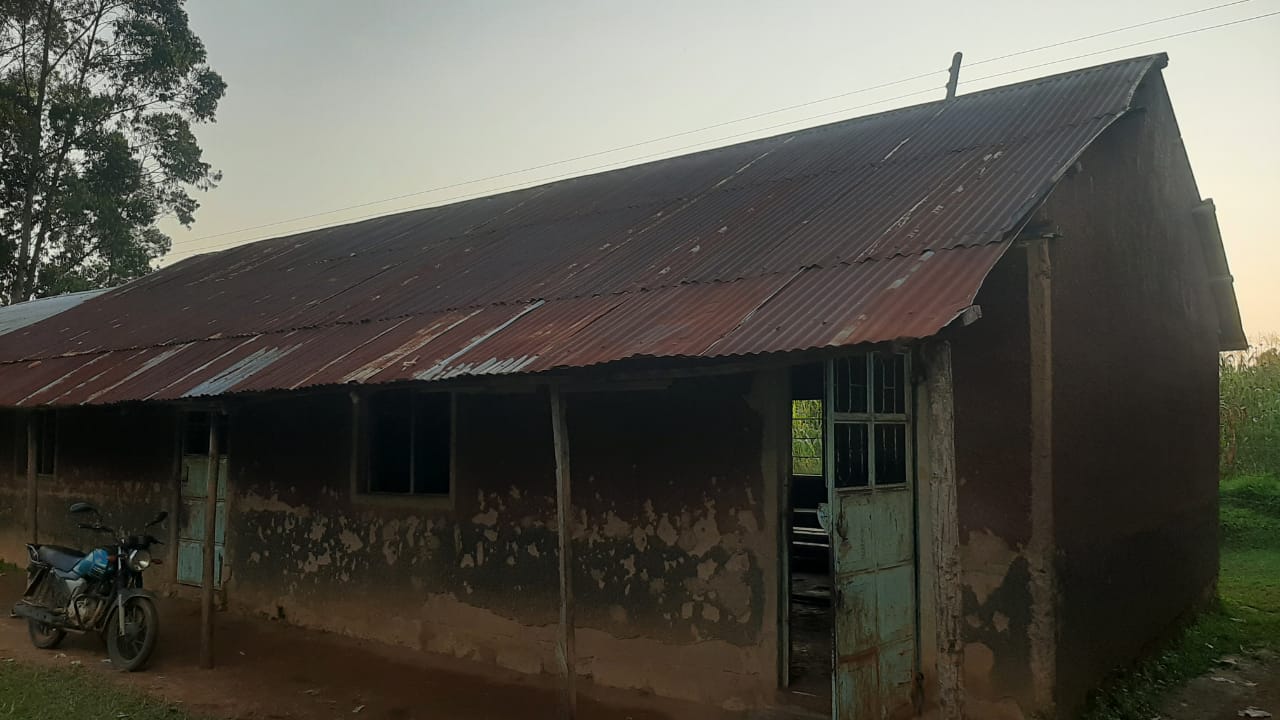Tucked deep in the rural landscape of Navakholo Sub County lies Bumamu Primary School, a public institution whose crumbling infrastructure tells the story of systemic neglect and the widening gap between policy promises and the realities on the ground.
Founded in the years following Kenya’s independence, Bumamu was once a beacon of access to education. Today, however, it stands in near collapse, a casualty of limited funding, poor oversight, and years of marginalization. For hundreds of learners, it is both a school and a daily reminder of inequality.

On Sunday, this writer, in the company of Mwalimu Bonface Manyasa and Mr Noe Kata, visited the institution following growing public concern over its state. What we found was alarming. Classrooms are held up by timber supports, iron sheets are rusted and patched, floors are cracked and dusty, desks are few and broken, and the only chalkboards are barely usable.
More distressing is the sanitation crisis. The school has no single functioning toilet for learners. The available latrines are structurally unsafe and unusable. Teachers, too, share a single decaying facility that no longer meets basic standards of hygiene or dignity.
Despite these conditions, more than 200 pupils continue to attend school each day. Most come from low income households and rely on the school as their only path to opportunity. Yet their learning experience is marked more by discomfort than development.

Following the visit, Mr Kata pledged immediate support to help restore the school’s core infrastructure. Works will begin soon to repaint the iron sheets on two classrooms, repair classroom floors, and construct new sanitation blocks for both learners and staff. These efforts, while modest, signal the beginning of a critical turnaround.
Poor infrastructure does more than inconvenience learners. It deeply affects learning outcomes. Under the Competency Based Education, learners are expected to explore, create and collaborate. Without safe and well equipped spaces, subjects like science, environmental studies, art and digital literacy remain out of reach. STEM education, in particular, suffers when schools lack laboratories, electricity or basic safety.
The absence of toilets has led to widespread absenteeism, particularly among girls. The few classrooms available are overcrowded and poorly ventilated. Teachers find it difficult to motivate pupils or prepare interactive lessons in such a limiting environment. The physical strain of teaching in these conditions, combined with the emotional toll of watching learners struggle, weighs heavily on staff morale.
Bumamu’s case highlights a persistent crisis in rural education. Despite education receiving the largest share in Kenya’s national budget, only a small portion reaches schools like this one. In the 2025–2026 financial year, the government allocated over 700 billion shillings to education. However, Bumamu Primary received just 8,000 shillings in capital funding — a figure that falls far short of any meaningful intervention. It is a drop in the ocean for a school whose needs include structural reinforcement, sanitation, furniture, and learning materials.
The story of Bumamu raises important policy questions. Should resource allocation continue to follow equal distribution formulas when schools begin from vastly unequal conditions? Should rural schools not benefit from targeted development programmes that address historical and geographic disadvantage? And how can community participation be strengthened to fill gaps where government intervention is delayed?
What is happening at Bumamu is more than a story of broken buildings. It is a story about the cost of inaction and the power of grassroots change. The decision by individuals to step in when the system falters is a reminder that change begins at the community level. The restoration of classrooms and toilets, however small, can help return dignity to learning and inspire a new sense of hope.
Improved facilities are expected to support better implementation of the curriculum, improve attendance and boost both learner and teacher morale. Girls can learn in dignity. Teachers can teach with purpose. Pupils can begin to see school as a space of promise, not punishment.
The revival of Bumamu Primary School will not happen in a day, but the first steps have already been taken. And in a country that promises universal access and equity in education, no child should have to learn in ruins. The cracks at Bumamu are real, but they may also be where the light begins to enter.


Facebook Comments